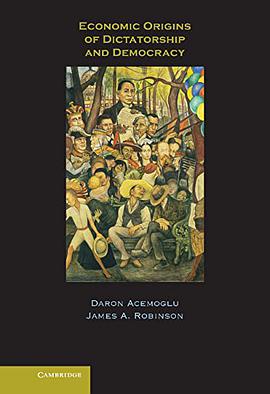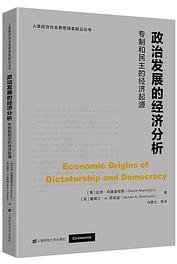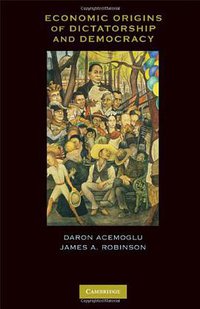
Daron Acemoglu / James A. Robinson
visão geral
What forces lead to democracy's creation? Why does it sometimes consolidate only to collapse at other times? Written by two of the foremost authorities on this subject in the world, this volume develops a framework for analyzing the creation and consolidation of democracy. It revolutionizes scholarship on the factors underlying government and popular movements toward democracy or dictatorship. Daron Acemoglu and James Robinson argue that different social groups prefer different political institutions because of the way they allocate political power and resources. Their book, the subject of a four-day seminar at Harvard's Center for Basic Research in the Social Sciences, was also the basis for the Walras-Bowley lecture at the joint meetings of the European Economic Association and Econometric Society in 2003 and is the winner of the John Bates Clark Medal.
contents
Part I. Questions and Answers;
Section 1. Paths of Political Development: 1. Britain; 2. Argentina; 3. Singapore; 4. South Africa, 5. The agenda;
Section 2. Our Argument: 1. Democracy vs. nondemocracy; 2. Building blocks of our approach; 3. Towards our basic story; 4. Our theory of democratization; 5. Democratic consolidation; 6. Determinants of democracy; 7. Political identities and the nature of conflict; 8. Democracy in a picture; 9. Overview of the book;
Section 3. What Do We Know About Democracy?: 1. Measuring democracy; 2. Patterns of democracy; 3. Democracy, inequality and redistribution; 4. Crises and democracy; 5. Social unrest and democratization; 6. The literature; 7. Our contribution;
Part II. Modelling Politics;
Section 4. Democratic Politics: 1. Introduction; 2. Aggregating individual preferences; 3. Single-peaked preferences and the median voter theorem; 4. Our workhorse models; 5. Democracy and political equality; 6. Conclusion;
Section 5. Nondemocratic Politics: 1. Introduction; 2. Power and constraints in nondemocratic politics; 3. Modeling preferences and constraints in nondemocracies; 4. Commitment problems; 5. A simple game of promises; 6. A dynamic model; 7. Incentive compatible promises; 8. Conclusion;
Part III. The Creation and Consolidation of Democracy;
Section 6. Democratization: 1. Introduction; 2. The role of political institutions; 3. Preferences over political institutions; 4. Political power and institutions; 5. A 'static' model of democratization; 6. Democratization or repression?; 7. A dynamic model of democratization; 8. Subgame perfect equilibria; 9. Alternative political identities; 10. Targeted transfers; 11. Power of the elite in democracy; 12. Ideological preferences over regimes; 13. Democratization in pictures; 14. Equilibrium revolutions; 15. Conclusion;
Section 7. Coups and Consolidation: 1. Introduction; 2. Incentives for coups; 3. A static model of coups; 4. A dynamic model of the creation and consolidation of democracy; 5. Alternative political identities; 6. Targeted transfers; 7. Power in democracy and coups; 8. Consolidation in a picture; 9. Defensive coups; 10. Conclusion;
Part IV. Putting the Models to Work;
Section 8. The Role of the Middle Class: 1. Introduction; 2. The three-class model; 3. Emergence of partial democracy; 4. From partial to full democracy; 5. Repression: the middle class as a buffer; 6. Repression: soft-liners vs. hard-liners; 7. The role of the middle class in consolidating democracy; 8. Conclusion;
Section 9. Economic Structure and Democracy: 1. Introduction; 2. Economic structure and income distribution; 3. Political conflict; 4. Capital, land and the transition to democracy; 5. Financial integration; 6. Increased political integration; 7. Alternative assumptions about the nature of international trade. 8. Conclusion; Part V. Conclusion and The Future of Democracy;
Section 10. Conclusion and the Future of Democracy: 1. Paths of political development revisited; 2. Extension and areas for future research; 3. The future of democracy;
Part VI. Appendix;
Section 11. Appendix to Section 4: The Distribution of Power in Democracy: 1. Introduction; 2. Probabilistic voting models; 3. Lobbying; 4. Partisan politics and political capture.


